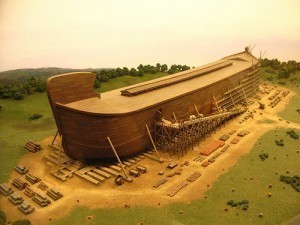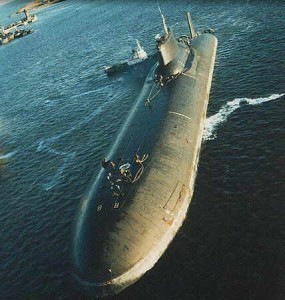Actual Size of Noah’s Ark
The actual size of Noah’s Ark can be read beginning in Genesis 6:14. It is believed to have been 450 feet long (equal to 135 m or 300 cubits). The Ark was 75 feet wide (22.5 m or 50 cubits). The vessel was 45 feet tall. That is the same as 13.5 meters or 30 cubits.
Details about the Ark
The Ark had three stories. In fact it would be higher than a three story building today. The dimensions of its deck were equal to 36 tennis courts. Put it another way, the ark deck was equal to twenty basketball courts. No other ship surpassed its size until the Eturia was built in 1884. Noah’s Ark is said to have been rectangular in shape.
Given the dimensions in the Bible, its length would have been ten times its height and six times the width. This would make it very stable in water. It wouldn’t have been easy to move the ship. But it wasn’t designed to sail; it was built to stay afloat until the waters receded. The dimensions given would have kept it stable even if the waters tossed and turned around it.
Design of the Ark
According to the Bible, the Ark was built from gopher wood. Gopher is a Hebrew term. During the early versions of the Bible, the term was used because the English equivalent was unknown. Today it is usually translated as cypress wood, but this is just a theory. While the actual size of Noah’s Ark is given in the Bible, researchers aren’t sure just how he built it.
But a 1993 research by scientists show that it is possible to build a ship based on the dimensions in the Bible. Research also indicates that this vessel would be stable in water. The Bible also says the Ark was to be coated with pitch. This is a Hebrew word with no definitive English translation. It was probably a material used to prevent decay or for waterproofing.
Other Information
The ship’s internal volume was 1,518,750 cubic feet. This is equal to 570 railroad boxcars. If the Ark was rectangular, there would have been a floor space of 100,000 square feet.
Finally, some experts believe the actual size of Noah’s Ark may be much bigger than the figures given. This is because there were big cubit sizes available back then. If bigger cubits were used, the Ark would have been much larger. The cubit measurement often used is the length from a man’s arm up to their fingertips.





